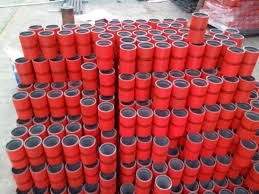- Afrikaans
- Albanian
- Amharic
- Arabic
- Armenian
- Azerbaijani
- Basque
- Belarusian
- Bengali
- Bosnian
- Bulgarian
- Catalan
- Cebuano
- Corsican
- Croatian
- Czech
- Danish
- Dutch
- English
- Esperanto
- Estonian
- Finnish
- French
- Frisian
- Galician
- Georgian
- German
- Greek
- Gujarati
- Haitian Creole
- hausa
- hawaiian
- Hebrew
- Hindi
- Miao
- Hungarian
- Icelandic
- igbo
- Indonesian
- irish
- Italian
- Japanese
- Javanese
- Kannada
- kazakh
- Khmer
- Rwandese
- Korean
- Kurdish
- Kyrgyz
- Lao
- Latin
- Latvian
- Lithuanian
- Luxembourgish
- Macedonian
- Malgashi
- Malay
- Malayalam
- Maltese
- Maori
- Marathi
- Mongolian
- Myanmar
- Nepali
- Norwegian
- Norwegian
- Occitan
- Pashto
- Persian
- Polish
- Portuguese
- Punjabi
- Romanian
- Russian
- Samoan
- Scottish Gaelic
- Serbian
- Sesotho
- Shona
- Sindhi
- Sinhala
- Slovak
- Slovenian
- Somali
- Spanish
- Sundanese
- Swahili
- Swedish
- Tagalog
- Tajik
- Tamil
- Tatar
- Telugu
- Thai
- Turkish
- Turkmen
- Ukrainian
- Urdu
- Uighur
- Uzbek
- Vietnamese
- Welsh
- Bantu
- Yiddish
- Yoruba
- Zulu
Understanding Casing Pup Joints in Oil and Gas Industry Applications and Functions
Understanding Casing Pup Joints in Oil and Gas Operations
Casing pup joints are essential components in the oil and gas industry, playing a crucial role in the integrity and functionality of drilling operations. This article aims to delve into the significance of casing pup joints, their applications, and the factors influencing their selection.
What are Casing Pup Joints?
Casing pup joints are short sections of pipe that are usually inserted into the casing string to adjust the length of the assembly. These joints are typically made of steel and are designed to withstand high pressure and extreme temperatures associated with drilling environments. They come in various sizes and are available in different weights and grades, ensuring compatibility with the specific requirements of a drilling project.
Applications in Drilling Operations
In drilling operations, casing pup joints serve multiple purposes. Firstly, they allow for adjustments in the length of the casing string to accommodate various well depths. This flexibility is crucial for achieving optimal wellbore stability and ensuring that the casing reaches the targeted depth without compromising integrity. Secondly, pup joints can be utilized to facilitate the connection of different components within the casing assembly, such as centralizers, screen assemblies, or other accessories.
Moreover, casing pup joints play a vital role in operations involving well intervention and completion. By providing a reliable connection point for additional equipment, these joints enable operators to perform tasks such as installing packers or conducting well tests efficiently.
Factors Influencing Selection
casing pup joint

When selecting casing pup joints for a specific project, several factors must be taken into consideration
1. Well Depth and Pressure The depth of the well and the pressure conditions are fundamental in determining the type and grade of pup joints required. High-pressure wells require joints that can withstand extreme forces without failure.
2. Material Composition The material used to manufacture pup joints significantly affects their performance. Common materials include carbon steel and stainless steel, both of which offer different levels of corrosion resistance and mechanical strength. Selecting the right material ensures the longevity of the joints in harsh environments.
3. Weight and Diameter The weight and diameter of the pup joints must conform to the overall casing design. A mismatch can lead to structural failures or complications during installation.
4. Regulatory Standards Compliance with industry standards and regulations is crucial. Various organizations set guidelines for the manufacturing and testing of casing materials, ensuring safety and reliability across oil and gas operations.
5. Cost Considerations Budget constraints often play a significant role in selecting casing pup joints. Operators must balance the need for quality and durability against the project's financial viability.
Conclusion
Casing pup joints are indispensable in the oil and gas industry, providing flexibility and support for drilling operations. Their ability to adjust the casing length and facilitate connections between various components enhances the efficiency and integrity of well construction and maintenance. By considering factors such as well depth, material composition, and regulatory standards, operators can make informed decisions that ultimately contribute to the success and safety of their drilling projects. As the industry continues to evolve, understanding the role of casing pup joints will remain vital for engineers and operators navigating the complexities of modern oil and gas extraction.
-
Tubing coupling plays a significant role in the chemical industryNewsApr.03,2025
-
The Importance of Tubing Crossover in Various Industrial FieldsNewsApr.03,2025
-
The characteristics and important role of Tubing Pup JointNewsApr.03,2025
-
Characteristics and functions of Pup jointNewsApr.03,2025
-
Characteristics and Functions of Pup Joint PipeNewsApr.03,2025
-
Application of Coupling Casing in Various ScenariosNewsApr.03,2025







